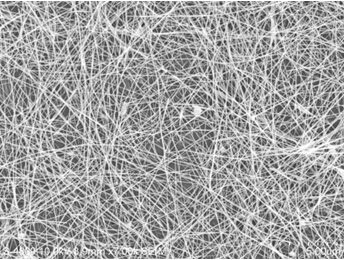

A team led by Professor Cui Zheng from the Printable Electronics Research Centre, Suzhou Institute of Nano-Tech and Nano-Bionics, developed a conductive silver nanowire (Ag NW) networks pattern by inkjet printing. Then they inkjet printed Ag NW directly as the top electrode for semi-transparent OPV devices by co-working with group of Professor Ma Changqi. The work was recently released in Appl. Phys. Lett. (doi: 10.1063/1.4913697).
The researchers obtained Ag NW patterns with different sheet resistance and transparency by adjusting inkjet printing parameters. The highest power conversion efficiency (PCE) of the OPV device using transparent printed Ag NW as top electrode was achieved to be about 90 percent of the reference device’s PCE, which was fabricated using thermal deposited Ag opaque electrodes.

A typical SEM image of the inkjet printed Ag NW. Image by Profes - sor Cui Zheng’s group
On the other hand, a series of different OPV devices were designed, and their current density-voltage (J-V) curves were studied carefully by comparing the fabricating process. The results revealed that solvent treatment on the underlying layer during printing led to a decrease of charge injection selectivity and an increase of charge recombination at the anode interface, which was considered to be the reason for the degrading of device performance.
This work was supported by the projects from the National Natural Science Foundation of China, Chinese Academy of Sciences, and the National Science and Technology Ministry.